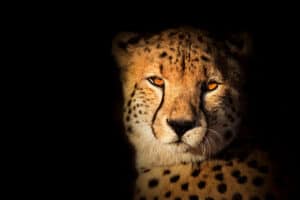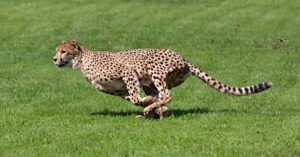Cheetahs are beautiful, powerful felines known for their unique 2,000 to 3,000 spots. Residing in remote areas in Africa and Iran (and previously other parts of Asia and Europe), cheetahs are the fastest land animals. But did you know that male and female cheetahs are actually quite different from each other?
From size to social behavior, here are eight key differences between male and female cheetahs.
1. Male Cheetahs Are Larger

Unsurprisingly, adult male cheetahs are usually larger than adult female cheetahs.
©Wayne Marinovich/Shutterstock.com
The average cheetah ranges between 75 to 140 pounds, with males weighing more due to their muscular builds. Additionally, their height ranges between 24 inches and 32 inches, and their length is between 45 and 55 inches. This does not include the tail length, which is up to another 33 inches. In all aspects, male cheetahs are usually slightly larger than females.
2. Female Cheetahs Are More Solitary

Female cheetahs love their solitude.
©iStock.com/StuPorts
Cheetahs are known to be a social cat species. However, while male cheetahs typically travel and hunt in groups, female cheetahs are solitary creatures. This independence typically starts at the age of sexual maturity. Once females reach maturation, they then split off from the rest of the group of cubs to start their own independent lives.
Once a female cheetah has its own cubs, she will care for those cubs by herself, hunting prey for them and protecting them against common cheetah predators. Eventually, the female cheetahs will return to their solitude once the cubs are old enough.
3. Males Have a More Muscular Build
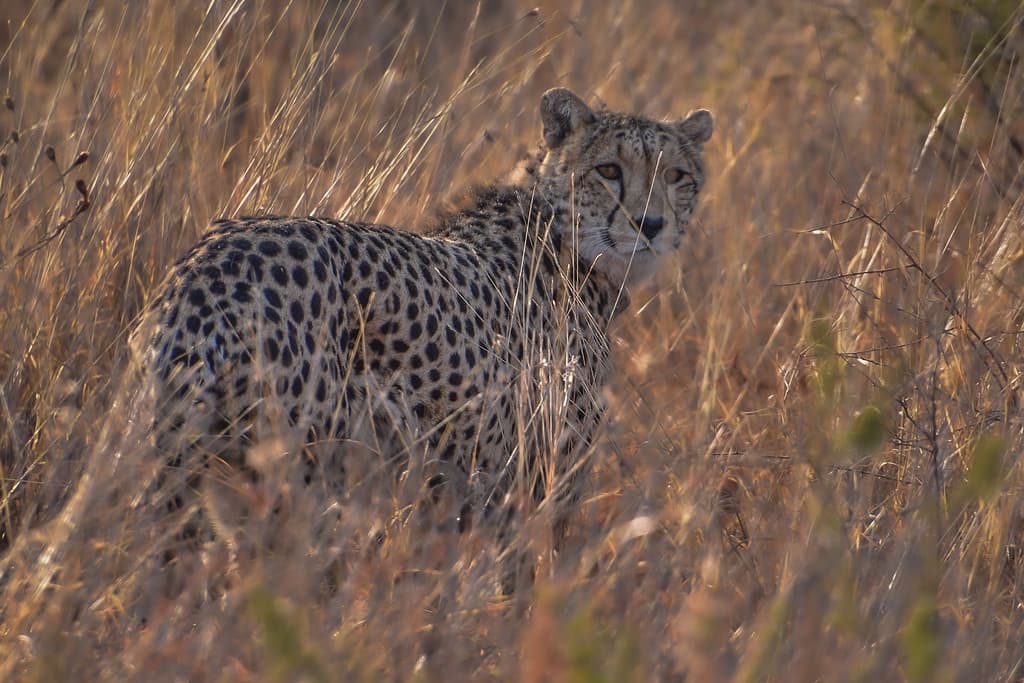
Cheetahs are known to camouflage with their surroundings.
©Wirestock/iStock via Getty Images
Cheetahs are known for their toned bodies and strong muscles that allow them to run at high speeds, making them the fastest land animals in the world. As mentioned earlier, while all cheetahs have a muscular build, male cheetahs are slightly more muscular than female cheetahs, contributing to their higher weight.
4. Females Raise Cubs Alone

Cheetah litters usually consist of between five to eight cubs.
©Stu Porter/Shutterstock.com
While female cheetahs will spend a lot of time on their own, they will also raise their cubs on their own. On the flip side, male cheetahs do not assist with raising their cubs. The only reason male and female cheetahs even interact is to mate.
After the cubs are born, the male will go back to live in its coalition and leave the babies with their mother. The female cheetah will then take over raising the cubs, hunting for them, and keeping them safe from predators. Mother cheetahs often leave their cubs for up to two days at a time while hunting for a sustainable amount of food for the cheetahs to eat.
Sometimes, a female cheetah will abandon a single cub to care for or start a larger litter. Additionally, if a cub is impaired or ill in any way, this might deter a mother from caring for it.
5. Males Have Bigger Heads

As a whole, cheetahs have relatively small heads and other features.
©paulafrench/iStock via Getty Images
While it might not be noticeable, male cheetahs have slightly larger heads than female cheetahs. This goes along with their overall bulkier appearance when compared to females.
6. Females Hunt on Their Own
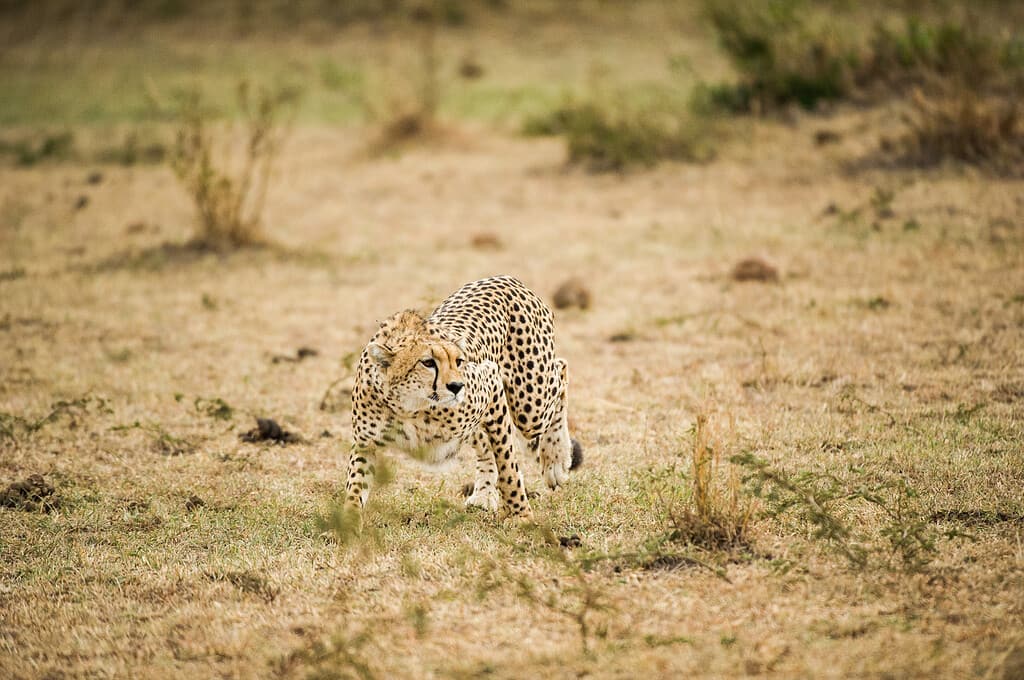
Cheetahs hunt by stalking their prey before attacking.
©edeag3/iStock via Getty Images
As previously mentioned, female cheetahs are solo hunters. They hunt for both themselves and their cubs, while the male cheetah hunts in packs with other males. Sometimes, female cheetahs will form mother-daughter pairs and hunt together; but for the most part, the females will raise their cubs alone and hunt solo, leaving their cubs behind for up to 48 hours at a time while finding food.
7. Males Live in Set Territories
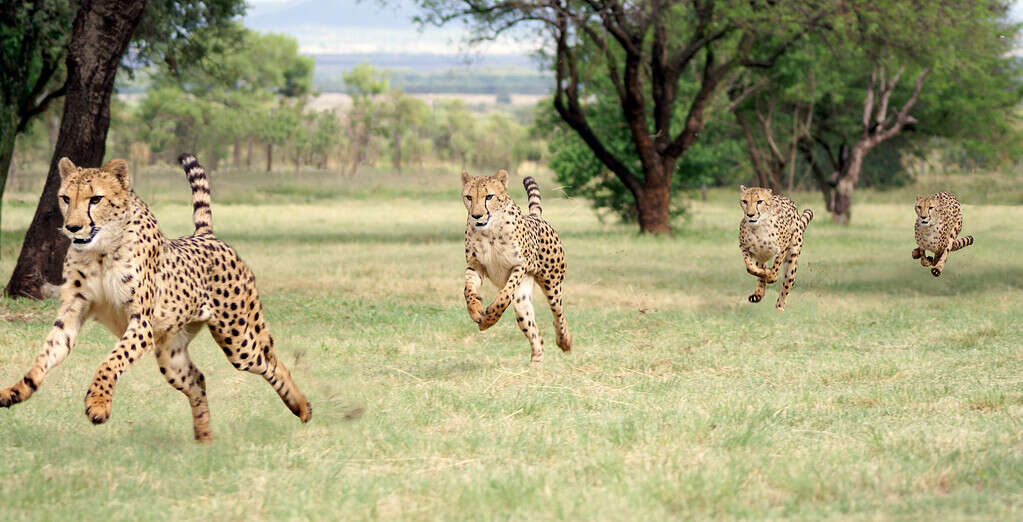
Male cheetahs typically live in packs of two to three males.
©photosfromafrica/iStock via Getty Images
Unlike female cheetahs, male cheetahs live in set territories with the rest of their packs. They tend to be more sedentary and establish small territories in areas that are highly populated with their prey. Not only that, but these territories tend to overlap with the female cheetahs’ home ranges, setting them up for success come mating season.
Females, on the other hand, will often travel and hunt within their larger home ranges. This is especially true if their pray is scattered among various locations. In other words, they won’t just stay in one secluded area as males will. Female cheetahs’ home ranges often even span the territories of multiple male coalitions.
8. Female Cheetahs Are Protective of Their Cubs

Like most female animals, mother cheetahs instinctually protect their cubs in the wild.
©GUDKOV ANDREY/Shutterstock.com
Female cheetahs protect their young by frequently moving them to different places to avoid predators or physically attacking threatening aggressors. Unlike father cheetahs, who only take part in the mating aspect of parenthood, mother cheetahs are fearless in the protection of their cubs.
The photo featured at the top of this post is © Travelnshot/Shutterstock.com
Thank you for reading! Have some feedback for us? Contact the AZ Animals editorial team.





